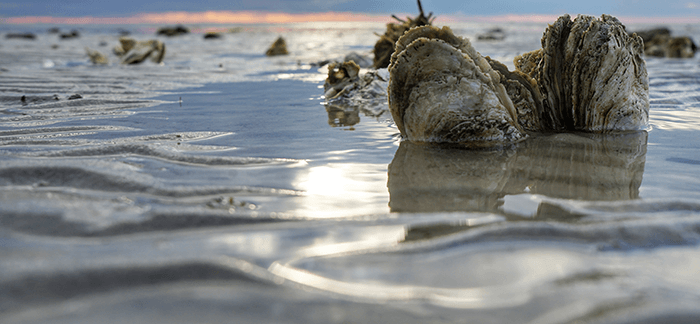Maryland’s oyster population has grown significantly in the last 20 years, according to the latest benchmark stock assessment issued this week by Maryland’s Department of Natural Resources (DNR) and the University of Maryland Center for Environmental Science. The assessment estimates more than 12 billion oysters in Maryland waters as of 2024—more than triple the population recorded in 2005.
Experts attribute this success to multiple factors, including significant large-scale oyster restoration efforts, several years of strong natural reproduction thanks to favorable environmental conditions, and harvest restrictions implemented since 2018.
Nearly a decade ago, the Maryland General Assembly passed a law requiring this stock assessment—a calculation of the total abundance of oysters and sustainable fishing rates—to be conducted at least every two years. Maryland’s assessment is subject to review by independent experts and is considered one of the most advanced for oysters in the nation.
Chesapeake Bay Foundation (CBF) championed this legislation and continues to advocate for data-driven decision making for Maryland’s public oyster fishery based on the stock assessment. Ongoing oversight from DNR is critical to identify and respond to threats to oysters such as disease outbreaks and increasing harvest pressure, and to continue forward momentum for oyster sanctuaries in the Bay and its tributaries.
CBF’s Maryland Executive Director, Dr. Allison Colden, issued the following statement:
“Oyster restoration is one of the Chesapeake Bay’s greatest success stories, and this latest stock assessment proves it. Oyster abundance in restored oyster sanctuaries has increased five-fold, even higher than the increase observed throughout Maryland. The strong results should encourage us to maintain, and even accelerate, the momentum for large-scale oyster restoration.
“However, luck has also played a role. Drought caused by changing environmental conditions has supported oyster population growth in recent years but also threatens to increase oyster diseases. While disease trends have remained low since 2018, DNR must continue vigilant monitoring to avoid significant oyster mortality like that observed in the early 2000s. Environmental conditions can quickly change. DNR’s strong oversight will help mitigate these often-uncontrollable threats.
“Not only are oysters a keystone species that naturally clean the water and support hundreds of other animals, they’re also critical to our state’s economy and culture. DNR’s conservative management of the oyster fishery since 2018 seems to have stabilized, and even grown, oyster fishery harvests. If we’d like to see oyster populations continue to double and triple for the foreseeable future, we must maintain sustainable, data-driven management of oysters in Maryland.”

Maryland Communications & Media Relations Manager, CBF
vdimarzio@cbf.org
443-482-2023


